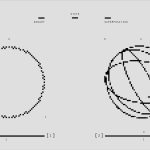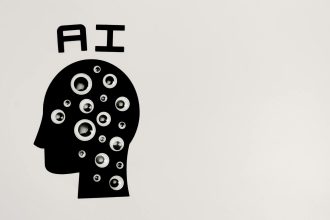Bio-Inspired Embodied Intelligence Platform for Bioelectronics
Bio-Inspired Embodied Intelligence Platform for Bioelectronics
Explore the groundbreaking Bio-Inspired Embodied Intelligence Platform for Bioelectronics. Discover how nature’s designs are revolutionizing the future of intelligent bioelectronic systems.
Unlocking Nature’s Blueprint: Bio-Inspired Embodied Intelligence for Bioelectronics
The intricate dance of biological systems has long been a source of wonder and inspiration. For decades, researchers have strived to replicate these marvels in artificial forms, particularly in the rapidly evolving field of bioelectronics. Now, a new frontier is emerging: the Bio-Inspired embodied intelligence platform for bioelectronics. This innovative approach leverages the sophisticated design principles found in nature to create more adaptive, efficient, and integrated bioelectronic devices.
Traditional bioelectronics often focus on isolated functions, mimicking specific biological components. However, the true power of biological systems lies in their embodied nature – how their physical form, sensory input, and motor output are intrinsically linked to their intelligence and adaptability. This platform seeks to bridge that gap, creating intelligent systems that not only interact with biological environments but do so with a degree of autonomy and responsiveness akin to living organisms.
The Core Concepts: Embodiment and Bio-Inspiration
At its heart, this platform rests on two fundamental pillars:
Embodiment: Intelligence in Action
Embodiment suggests that intelligence is not solely an abstract computational process but is deeply intertwined with the physical body and its interaction with the environment. For bioelectronics, this means designing systems that have a physical presence, can sense their surroundings, and can act upon them. Think of a prosthetic limb that not only moves but also “feels” the texture of an object or a smart implant that adjusts its function based on real-time physiological feedback.
Bio-Inspiration: Learning from Life’s Masters
Nature, through billions of years of evolution, has perfected incredibly efficient and robust solutions to complex problems. Bio-inspiration draws from these natural designs – from the neural networks of insects to the proprioceptive feedback loops in muscles. By studying these biological marvels, we can develop novel algorithms, materials, and architectures for our bioelectronic systems.
Why a Bio-Inspired Embodied Intelligence Platform?
The advantages of adopting a bio-inspired embodied intelligence platform for bioelectronics are profound, promising advancements across multiple domains:
Enhanced Adaptability and Robustness
Biological systems excel at adapting to unpredictable environments. By mimicking this embodied intelligence, bioelectronic devices can become more resilient to changes in their operating conditions, whether that’s fluctuations in biological signals or unexpected external stimuli. This leads to more reliable and long-lasting performance.
Improved Human-Machine Integration
For applications like prosthetics, brain-computer interfaces, and wearable health monitors, seamless integration with the human body is paramount. Embodied intelligence, informed by bio-inspiration, can lead to devices that are more intuitive, natural, and comfortable to use, fostering a deeper connection between the user and the technology.
Novel Sensing and Actuation Capabilities
Nature offers a vast array of sophisticated sensing mechanisms, from the exquisite sensitivity of a bat’s echolocation to the chemical detection prowess of an ant. By drawing inspiration from these, we can develop new classes of bioelectronic sensors and actuators that are more precise, energy-efficient, and capable of detecting subtle biological cues.
Energy Efficiency and Sustainability
Living organisms are remarkably energy-efficient. The principles of embodied intelligence, such as distributed processing and optimized energy harvesting, can be applied to bioelectronic systems to reduce their power consumption and prolong their operational life, particularly crucial for implantable devices.
Key Components of the Platform
Building a truly bio-inspired embodied intelligence platform involves several critical areas of development:
1. Bio-mimetic Sensory Systems
These are sensors designed to replicate the functionality and efficiency of biological sensory organs. Examples include:
- Artificial photoreceptors mimicking the human eye.
- Chemosensors inspired by the olfactory system.
- Tactile sensors that emulate the sensitivity of skin receptors.
- Auditory sensors inspired by the mechanics of the ear.
2. Embodied Control Architectures
This involves developing control systems that integrate sensory feedback with motor commands, mirroring how biological nervous systems operate. Key aspects include:
- Proprioception: Enabling the system to understand its own physical state and position.
- Exteroception: Processing external environmental information.
- Motor Control Algorithms: Developing algorithms that translate intentions into physical actions, often inspired by biological motor control.
- Feedback Loops: Implementing robust feedback mechanisms for continuous adaptation and learning.
3. Bio-compatible and Bio-integrated Materials
The physical substrate of the bioelectronic device is crucial. This involves using materials that are:
- Non-toxic and biocompatible with human tissues.
- Flexible and conformable to the body’s contours.
- Capable of efficient signal transduction and energy management.
4. Neuromorphic Computing and AI
Leveraging principles from neuroscience, neuromorphic chips and AI algorithms are essential for processing the vast amounts of sensory data and enabling intelligent decision-making within the embodied system. These often draw inspiration from the structure and function of biological neurons and neural networks.
Future Directions and Applications
The development of a Bio-Inspired embodied intelligence platform for bioelectronics opens up a wealth of exciting possibilities:
Advanced Prosthetics and Exoskeletons
Imagine prosthetic limbs that move and feel with natural dexterity, or exoskeletons that provide seamless, intuitive assistance for mobility. This platform can lead to devices that are virtually indistinguishable from biological counterparts in terms of function and user experience.
Next-Generation Brain-Computer Interfaces (BCIs)
BCIs could evolve from simple command interfaces to rich, bidirectional communication channels, allowing for more nuanced control and even sensory feedback from external devices directly to the brain.
Smart Implants and Drug Delivery Systems
Implantable devices could become more autonomous, monitoring physiological conditions and delivering therapeutic agents precisely when and where needed, adapting to disease progression in real-time.
Robotics in Healthcare
Bio-inspired robots could assist in surgery with greater precision, provide rehabilitation therapy, or even offer companionship, all while interacting more naturally and safely with patients.
The journey towards fully realized bio-inspired embodied intelligence in bioelectronics is complex, requiring interdisciplinary collaboration between biologists, engineers, computer scientists, and material scientists. However, the potential to create intelligent systems that augment and restore human capabilities, and even interact with biological systems in entirely new ways, is a powerful motivator.
This platform represents a paradigm shift, moving beyond simple biomimicry to a deeper understanding of how embodiment and intelligence are interwoven in nature. By embracing this holistic approach, we are paving the way for a future where bioelectronics are not just devices, but extensions of ourselves, seamlessly integrated and intelligently responsive.
Discover more about the transformative potential of bio-inspired design in our article on the future of bio-inspired robotics.
Learn about the cutting-edge research in advanced neuroscience and technology that complements these developments.
Conclusion
The Bio-Inspired embodied intelligence platform for bioelectronics marks a significant leap forward, merging the elegance of biological design with the power of modern technology. By focusing on how intelligence arises from the interaction of physical form, sensing, and action, researchers are creating bioelectronic systems that are more adaptive, intuitive, and effective. This paradigm promises to revolutionize healthcare, human augmentation, and our very understanding of intelligent systems.
© 2025 thebossmind.com





